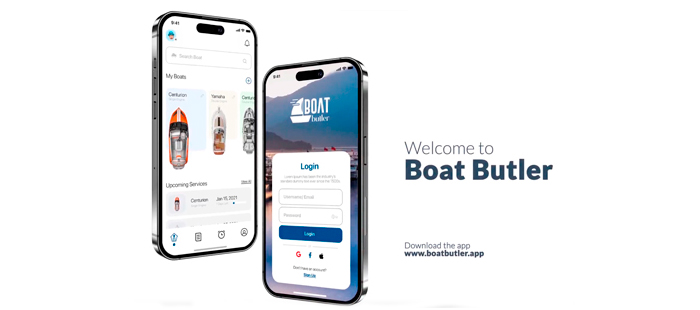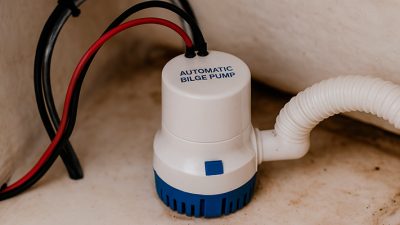Owning an inboard boat is all about enjoying the freedom of the open water, but to keep those adventures worry-free, consistent maintenance is key. Proper care ensures that your boat stays in peak condition, prolongs its life, and prevents unexpected breakdowns. Here’s a comprehensive guide to recommended maintenance tasks for an inboard boat to keep your boating experience smooth and enjoyable.
Proper maintenance not only extends the life of your inboard boat but also keeps all its components, such as hoses and belts, in top working condition. By regularly inspecting and replacing these crucial parts, you can prevent potential issues before they escalate, ensuring that each journey on the water is as smooth and safe as possible.
Routine Engine Maintenance
Oil Changes: Regular oil changes are crucial for the health of your inboard engine. Change the engine oil and oil filter every 50 to 100 hours of operation or at least once a year. Clean oil keeps the engine lubricated and free of damaging particles that can cause wear.
Cooling System Inspection: Inboard engines use a closed cooling system or a raw water system. Check the coolant levels regularly if you have a closed system, and replace the coolant annually. For raw water systems, inspect the impeller every season. Replace impellers every two years or sooner if they show signs of wear, as they are critical in maintaining proper engine temperature.
Fuel System Care: Water can easily enter your fuel tank, which could lead to engine damage. Make sure to inspect and replace fuel filters annually and use a fuel stabilizer if the boat will sit unused for an extended period. Additionally, inspect fuel lines for cracks or signs of wear to avoid leaks.
Electrical System Inspection
Battery Maintenance: Regularly check your boat’s battery for charge level and overall health. Clean any corrosion from battery terminals and ensure cables are securely fastened. It’s also a good idea to keep the battery charged, especially during the off-season, to avoid any power-related issues when you’re ready to get back on the water.
Wiring Inspection: Carefully examine the boat’s wiring for wear and tear, especially in areas exposed to saltwater. Look for corrosion, frayed insulation, or loose connections to prevent any electrical malfunctions.
Propeller and Shaft Maintenance
Propeller Inspection: Inspect the propeller for dings, cracks, or other damage that could impact performance. Even small imperfections can cause vibrations and reduce efficiency, so have any damage repaired by a professional. Make sure the propeller is tightly fitted to the shaft
Shaft and Couplings: Inspect the propeller shaft and couplings for any signs of wear or misalignment. Vibration while underway is often a sign of a misaligned shaft, which can lead to significant engine problems if left unaddressed.
Transmission and Lubrication
Transmission Fluid: Just like your engine, the transmission requires regular maintenance. Check the transmission fluid level often and change it annually to keep the system running smoothly. Low or dirty fluid can lead to shifting issues and transmission damage.
Hull and Bilge Maintenance
Hull Cleaning: Keeping the hull clean not only improves efficiency but also helps prevent marine growth that can damage your boat. Regularly clean the hull and inspect it for blisters or cracks. Applying antifouling paint will help minimize marine growth, particularly if you keep your boat in the water for long periods.
Bilge Cleaning: The bilge is a crucial area for preventing water accumulation. Inspect the bilge pump regularly and test it to ensure it’s functioning correctly. Clean the bilge to remove any oil, grime, or debris that could interfere with its operation.
Off-Season Maintenance
If you’re storing your inboard boat for the off-season, proper winterization is essential. Drain any remaining water from the cooling system and add antifreeze to protect against freezing temperatures. Fogging the engine and lubricating moving parts will also help prevent corrosion during storage. It’s also important to cover the boat and store it in a dry, protected location to reduce exposure to the elements.
Safety Equipment Check for Inboard Boat
Lastly, as part of your maintenance routine, ensure that all safety equipment on board is in good working order. Inspect fire extinguishers, life jackets, and emergency signaling devices, and make sure all are readily accessible in case of an emergency.
By following these recommended maintenance steps, you can significantly extend the lifespan of your inboard boat, ensuring that every trip out on the water is both safe and enjoyable. Consistent care keeps your boat ready for action and minimizes costly repairs, allowing you to focus on what truly matters—making unforgettable memories on the water.
What is Recommended Maintenance for an Inboard Boat — Conclusion
Regular boat maintenance is crucial to keep the boat running smoothly, and routine maintenance tips—such as inspecting the engine, steering system, and other essential parts—will alert you to potential safety risks and help you avoid costly repairs. Checking and replacing parts like the steering cables, cooling system components, and fuel filters keeps the engine clean and free of debris, allowing it to run smoothly. By flushing the cooling system with fresh water to remove salt and buildup, and by regularly inspecting and replacing corroded parts, you’ll be maintaining the boat’s engine and other systems according to the manufacturer’s recommendations, which is essential to ensure your boat’s performance.
Routine inspections are the best way to keep your boat running smoothly and extend the life of the engine. From the outdoor coil, when focused on cooling or heat, to the pneumatic system acting on a piston, each part plays a vital role. Overall, adhering to these maintenance tips will reduce the risk of breakdowns, enhance the capacity of heating and cooling equipment (as affected by conditions), and ensure an enjoyable boating experience every time you use your boat.
Our Partner — Boat Butler

Boat Butler. Enhance your maintenance routine with the Boat Butler app, designed specifically for boat engine maintenance reminders. Created by boaters for boaters, Boat Butler ensures that your boat engine stays in top condition every time you head out on the water. Packed with marine engine diagnostic tools, Boat Butler also offers automated service reminders, custom notifications, and a Marine Business Directory. Track service history, manage boat documentation, and connect with the boating community—all within one app.









